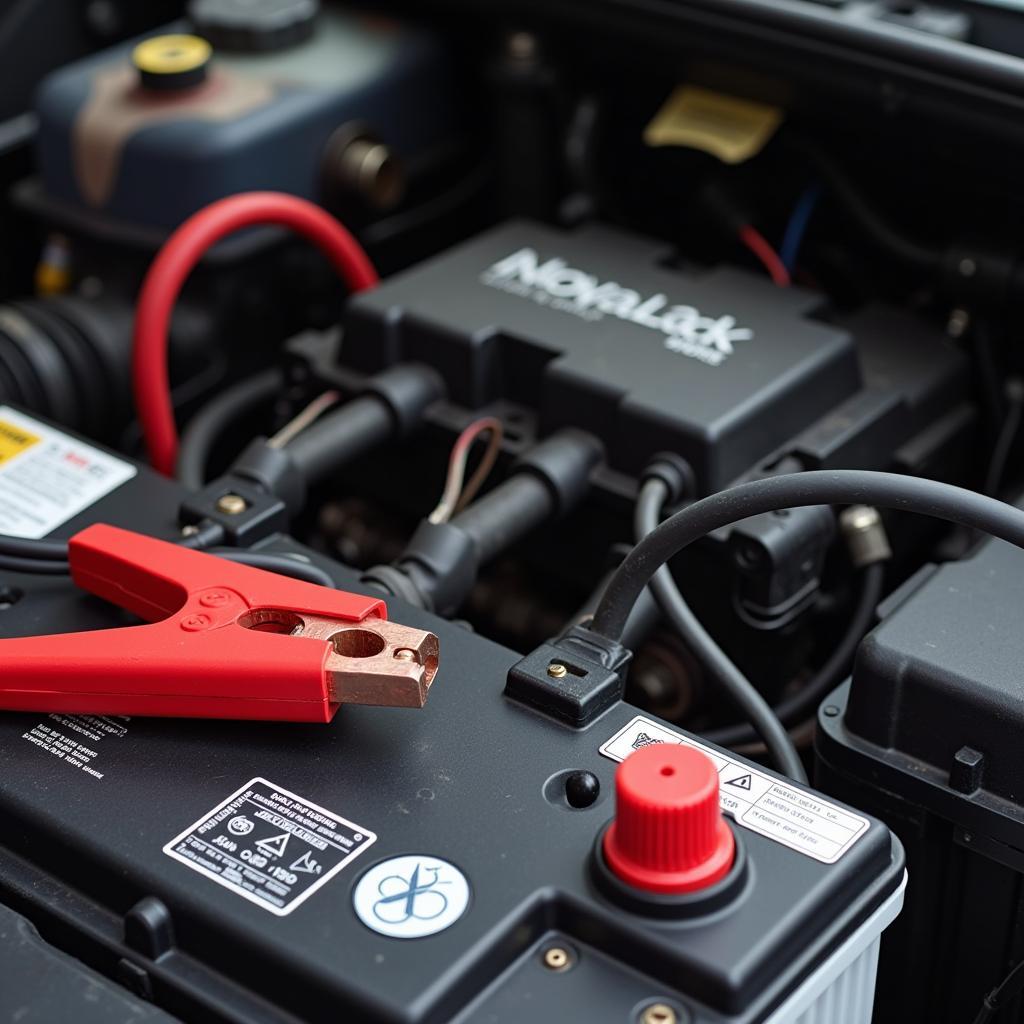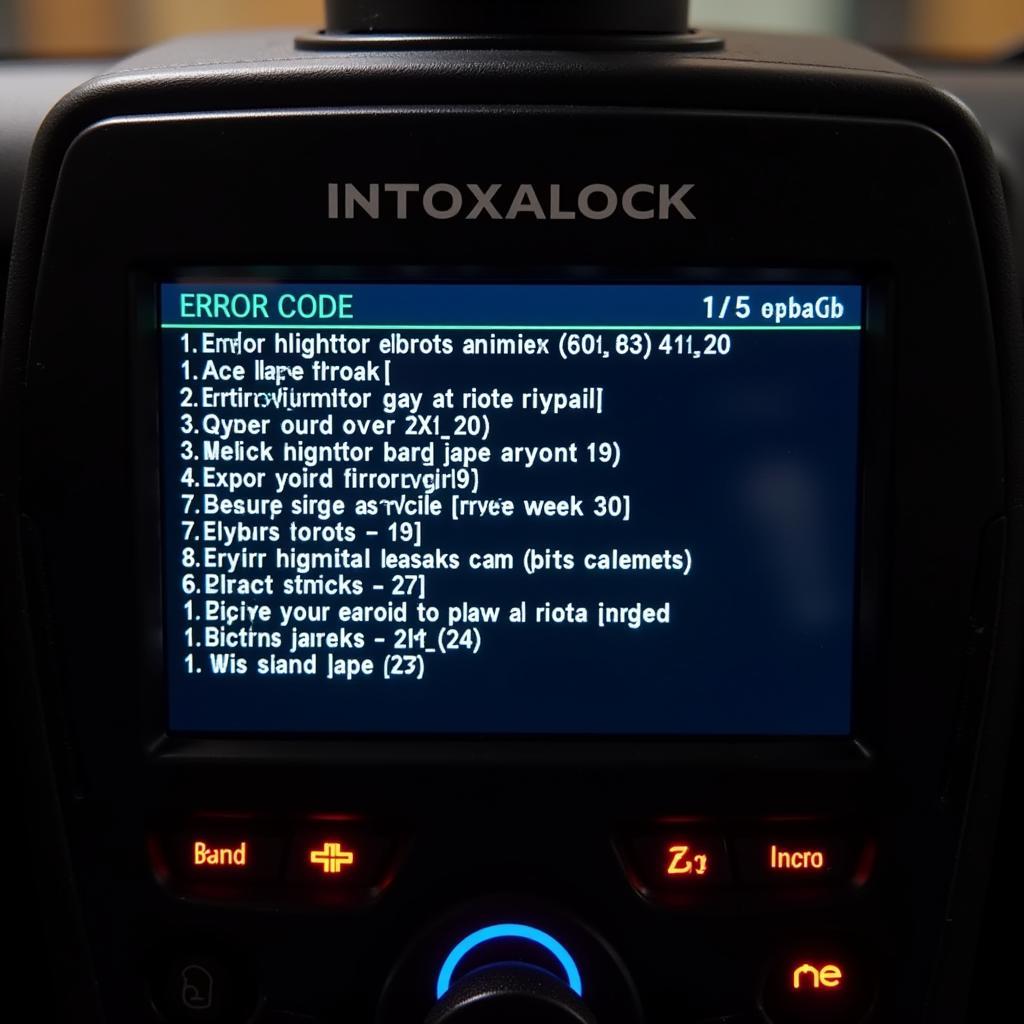Intoxalock devices, while essential for some drivers, can occasionally cause car problems. This article delves into common Intoxalock-related car issues, providing troubleshooting tips and solutions for car owners, mechanics, and technicians. We’ll explore the various ways these devices can impact your vehicle’s performance and offer expert advice to help you get back on the road smoothly.
Common Intoxalock Car Problems: Understanding the Issues
Many drivers using Intoxalock devices experience car troubles ranging from starting difficulties to electrical malfunctions. Understanding the potential problems is the first step toward finding a solution. These issues can stem from faulty installation, wiring problems, device malfunctions, or even compatibility issues with your specific car model.
Starting Problems: When Your Car Won’t Turn Over
One of the most common complaints is difficulty starting the vehicle. This can manifest as slow cranking, clicking sounds, or the engine not turning over at all. Several factors, including a drained car battery due to the Intoxalock’s power draw, loose wiring, or a malfunctioning device, can contribute to starting problems.
 Intoxalock Draining Car Battery
Intoxalock Draining Car Battery
Electrical System Malfunctions: From Dim Lights to Complete Failure
Intoxalock devices can sometimes interfere with the vehicle’s electrical system. This can range from dimming headlights and flickering interior lights to more serious issues like complete electrical system failure. This is often due to incorrect wiring or a faulty device overloading the system.
Device Malfunctions: Error Codes and Calibration Issues
The Intoxalock device itself can malfunction, displaying error codes, failing to calibrate correctly, or requiring frequent recalibration. These malfunctions can prevent the vehicle from starting or lead to other operational problems.
 Intoxalock Device Displaying Error Codes
Intoxalock Device Displaying Error Codes
Troubleshooting Intoxalock-Related Car Problems
Identifying the root cause of the issue is crucial for effective troubleshooting. Begin by checking the Intoxalock device for error codes and consult the user manual or contact Intoxalock customer support for guidance.
Checking the Basics: Battery, Wiring, and Connections
Inspect the car battery for proper voltage and ensure it is adequately charged. Examine the wiring connections to the Intoxalock device for looseness, corrosion, or damage. Tighten loose connections and clean or replace corroded wires.
Device Diagnostics: Understanding Error Codes and Calibration Procedures
Familiarize yourself with the Intoxalock device’s error codes and their meanings. Follow the recommended calibration procedures outlined in the user manual. If calibration issues persist, contact Intoxalock for assistance.
Seeking Professional Help: When to Consult a Mechanic
If you’ve exhausted basic troubleshooting steps and the problem persists, it’s time to consult a qualified mechanic experienced with Intoxalock installations. They can diagnose more complex electrical issues and ensure the device is properly integrated with your vehicle’s systems.
Intoxalock and Car Batteries: Preventing Drainage
A common issue is the Intoxalock draining the car battery. Ensure the device is installed correctly and the car’s electrical system is in good condition. Disconnecting the Intoxalock when the vehicle is parked for extended periods can prevent battery drain.
“A poorly installed Intoxalock device can wreak havoc on a vehicle’s electrical system. Always ensure a qualified technician performs the installation,” says John Smith, ASE Certified Master Technician.
Conclusion: Solving Your Intoxalock Car Problems
Intoxalock devices, while serving an important purpose, can sometimes lead to car troubles. By understanding the potential issues and following these troubleshooting tips, you can address most Intoxalock-related car problems. If you’re still facing difficulties, connect with a qualified mechanic or contact us at Autotippro for assistance. Our number is +1 (641) 206-8880, and our office is located at 500 N St Mary’s St, San Antonio, TX 78205, United States.
“Regular maintenance and prompt attention to any Intoxalock-related issues can help keep your car running smoothly,” adds Maria Garcia, Automotive Electrical Systems Expert.
FAQ
-
Can Intoxalock drain my car battery? Yes, if improperly installed or left connected for extended periods while the car is off.
-
What do I do if my Intoxalock device displays an error code? Consult the user manual or contact Intoxalock customer support.
-
Can I install an Intoxalock device myself? Professional installation is highly recommended to avoid potential issues.
-
My car won’t start with the Intoxalock installed. What should I do? Check the battery, wiring, and device connections. If the problem persists, contact a mechanic.
-
How often should I calibrate my Intoxalock device? Follow the manufacturer’s recommendations for calibration frequency.
-
Can an Intoxalock device damage my car’s computer? While rare, improper installation can potentially damage the vehicle’s electrical system, including the computer.
-
Who can I contact for help with Intoxalock-related car problems? A qualified mechanic or AutoTipPro can provide assistance.




Leave a Reply